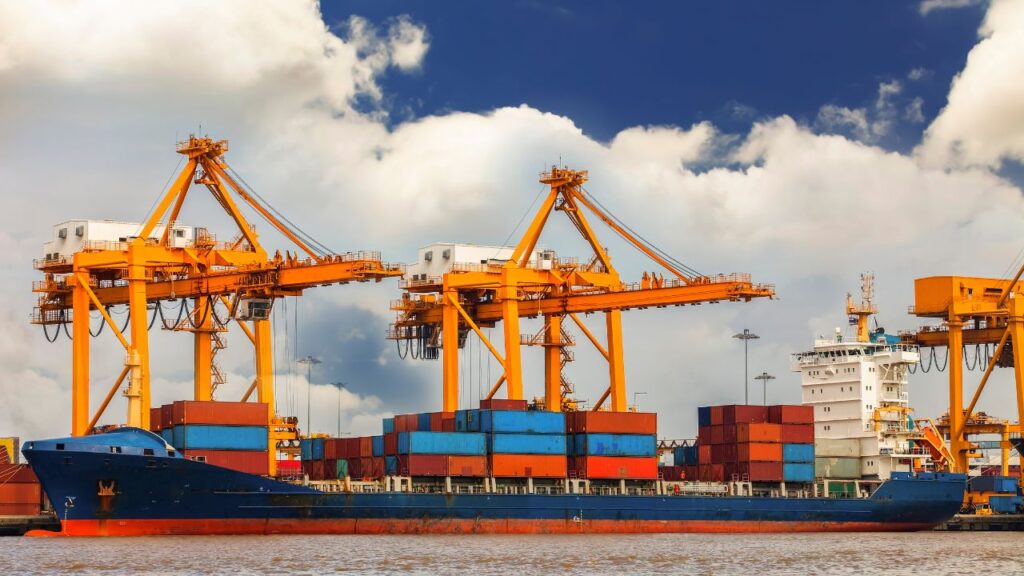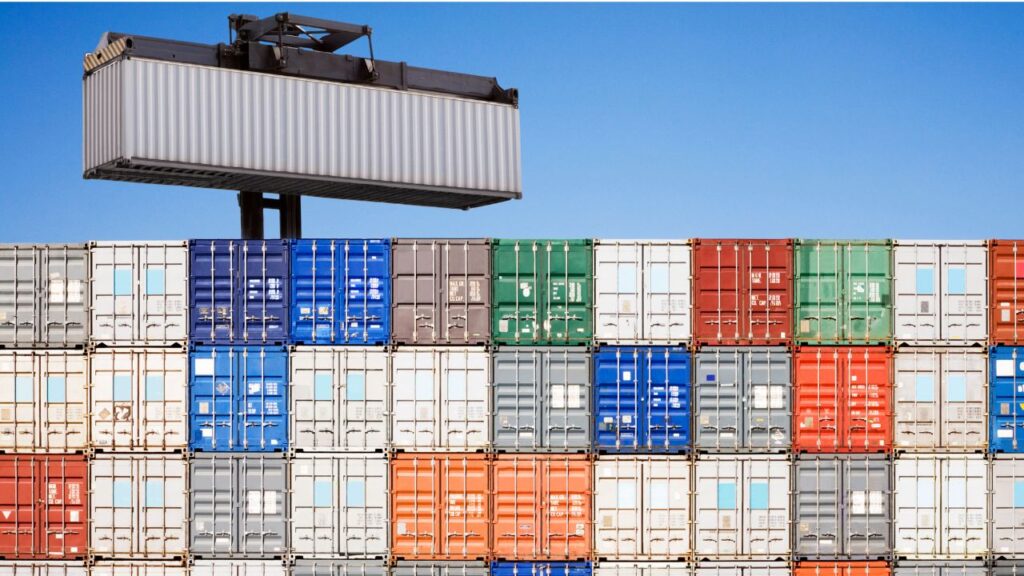Did you know?
Container shipping is responsible for the transportation of nearly 90% of the world’s goods via sea.
It has truly revolutionized international trade at an unprecedented scale.
If you are a freight forwarder, you need to understand the dynamics of container shipping rates and how you can optimize them.
In this comprehensive guide, we’re going to look at container shipping rates, how they work, and factors that can impact them. We will also talk about ways to reduce your container shipping costs so you can raise your profitability.
First, let’s understand what container shipping rates mean.
What Are Container Shipping Rates?
Container shipping rates are the fees charged by shipping carriers to transport freight in standardized containers. When we talk about container shipping rates, it includes all 4 types of costs:
- Ocean freight charges
- Port handling fees
- Inland transportation costs
- Surcharges and additional fees
At the same time, container shipping rates also depend on a variety of factors such as distance covered, the sea route, container size, and market conditions. Shipping rates charts are available online with pricing across different routes and container types.
Let us take a look at the container shipping rates in 2024.
Disclaimer: These rates are subject to change so double-check them for reliable sources before preparing your quote.
Container Shipping Rates in 2024

Here’s an overview of the rates for some popular shipping routes:
Asia to North America (West Coast):
- 40′ container: Average rate of $2,800 – $3,200
- 20′ container: Average rate of $2,000 – $2,400
Asia to North America (East Coast):
- 40′ container: Average rate of $3,500 – $4,000
- 20′ container: Average rate of $2,500 – $3,000
Asia to Europe:
- 40′ container: Average rate of $3,000 – $3,500
- 20′ container: Average rate of $2,200 – $2,700
Transatlantic (Europe to North America):
- 40′ container: Average rate of $2,500 – $3,000
- 20′ container: Average rate of $1,800 – $2,200
When you compare these rates to the period of 2021-2022, these rates represent a significant stabilization. For instance, the Asia to North America (West Coast) route for a 40′ container has seen a 70% decrease from its peak in September 2021, when rates reached as high as $20,000.
Again, I would like to point out that these are average rates and can fluctuate based on factors such as fuel prices, demand, and specific carrier policies.
Always refer to the most recent container shipping rates chart 2024 for up-to-date information.
That being said, let us dive into how shipping rates are calculated.
How are the Container Shipping Rates Calculated?
The rates are typically based on the following factors:
- Base Ocean Freight Rate: Think of it like the core of the shipping container pricing. This is the basic cost of transporting a container from its origin to the destination port.
- Terminal Handling Charges (THC): These charges are levied at the port terminal to load and unload containers.
- Inland Transportation Costs: As the name suggests, this is the cost of moving the containers to and from the port through inland transportation.
- Surcharges: On top of the base ocean freight rates, the shipping line can levy the following types of fees:
- BAF (Bunker Adjustment Factor)
- CAF (Currency Adjustment Factor)
- PSS (Peak Season Surcharge)
- GRI (General Rate Increase)
Based on these factors, carriers and freight forwarders prepare container shipping rate charts for various routes. These charts are a dynamic piece of data. They are updated regularly based on market conditions and operational costs. These tools take into account factors such as origin, destination, container size, and additional services to provide an estimated total cost.
And that’s not all. Let’s take a quick look at a few more factors that affect the calculation of shipping container rates.
Factors Influencing Container Shipping Rates

Container shipping rates can vary significantly based on several factors. Here are 8 more factors that impact container shipping rates:
- Route: You can expect higher rates on routes that are less traveled.
- Fuel Prices: Fluctuations in fuel costs have a direct impact on container shipping rates via BAF surcharges.
- Demand/Supply Economics: Market conditions, including container and vessel availability, significantly affect pricing.
- Seasonal Demand: Peak shipping seasons (e.g., holiday periods) will result in higher shipping rates.
- Geopolitical Events: Trade policies, sanctions, and global events can impact shipping costs.
- Container Type and Size: Specialized containers (e.g., refrigerated) and larger containers typically cost more to ship. Ocean freight rates for 40′ containers are generally higher than those for 20′ containers due to the increased capacity.
- Port Congestion: Delays and inefficiencies at ports can lead to additional charges.
- Currency Exchange Rates: Fluctuations in currency values can affect international shipping costs.
When it comes to container shipping rates many clients are often confused about the term Surcharges. So let us break it down even further.
Detailed Breakdown of Surcharges
To accurately estimate container shipping rates, it’s crucial to understand the various surcharges.
Here they are:
- Bunker Adjustment Factor (BAF): If fuel prices increase by 10%, the BAF might increase by $100 per 40′ container on a transpacific route. This surcharge fluctuates with fuel prices.
- Peak Season Surcharge (PSS): These are usually applied during peak periods, such as August to October ahead of the holiday season. PSS can range from $200 to $1,000 per container, depending on the route and demand.
- General Rate Increase (GRI): Usually announced monthly, GRIs can range from $200 to $1,000 per container. However, the fully announced GRI is not always implemented due to market conditions.
- Low Sulfur Surcharge: Introduced after the IMO 2020 regulations, this surcharge covers the cost of using low-sulfur fuel. It can range from $50 to $150 per container, depending on the length of the route.
Earlier, we looked at the size and type of container in the container shipping rate calculation.
The truth is – there are many different types of containers and each one has an implication on the rates. Let’s take a look.
Container Types and Their Impact on Shipping Rates

Different container types impact container shipping rates differently:
- Standard containers (20′, 40′, 40′ High Cube): Most common and generally the least expensive option. These are often referred to in terms of TEU (Twenty-foot Equivalent Unit) pricing and FEU (Forty-foot Equivalent Unit) rates.
- Refrigerated containers (Reefers): Can cost 30-50% more than standard containers due to power requirements and specialized handling.
- Open top containers: These containers are often priced similarly to standard containers but may incur additional handling charges.
- Flat rack containers: These can be 20-30% more expensive than standard containers due to their versatility for oversized cargo.
- Tank containers: These are specialized containers and the most expensive ones. They cost 50-100% more than standard containers.
Now that you have a better understanding of how container shipping rates are calculated, it’s time to dive into some ways to save on container shipping costs and improve your profitability.
Strategies to Optimize Container Shipping Costs

As someone who’s navigated the complex world of international shipping, I’ve learned the lessons the hard way. Here are some strategies I’ve found particularly useful:
- Compare Quotes Diligently: Don’t just settle for the first quote you receive. Make it a practice to obtain and compare quotes from multiple carriers. I’ve found that using ocean freight rates charts as a benchmarking tool can provide valuable context for the quotes you receive.
- Negotiate with Confidence: If you’re shipping consistently or in high volumes, don’t hesitate to negotiate rates. Many carriers are open to discussion, especially for reliable, long-term business. Remember, even a small discount can lead to substantial savings over time.
- Plan Shipments Strategically: Booking shipments well in advance can often secure better rates and help avoid peak season surcharges. In my experience, this proactive approach not only saves money but also reduces last-minute stress.
- Consider Consolidation Options: For smaller shipments, Less than Container Load (LCL) shipping can be cost-effective. It allows you to share container space and costs with other shippers. Some carriers offer sea freight rates per kg, which can be particularly advantageous for lighter shipments.
- Optimize Container Usage: Efficient packing can make a significant difference. By maximizing space utilization within containers, you might be able to reduce the number of containers needed, leading to considerable savings.
- Choose Appropriate Incoterms: Selecting the right Incoterms is crucial for clearly defining responsibilities and costs between buyer and seller. Taking the time to understand and apply these terms correctly can prevent unexpected expenses and disputes.
- Leverage Technology: Utilize freight rate benchmarking tools and container shipping rate calculators. These technologies can provide valuable insights and help ensure you’re getting competitive pricing.
- Build Strong Carrier Relationships: Establishing long-term relationships with carriers can lead to potential volume discounts and improved service. I’ve found that reliable, consistent business is often rewarded with better rates and terms.
- Regularly Review and Audit Invoices: Make it a habit to carefully check invoices for accuracy. Discrepancies do occur, and catching them can lead to significant savings. If you spot any issues, don’t hesitate to dispute them with your carrier or freight forwarder.
Market Analysis Tools
Here are some tools that will help you in analyzing and forecasting container shipping rates:
- Freightos Baltic Index (FBX): Provides daily global container freight rates.
- Shanghai Containerized Freight Index (SCFI): Reflects export rates from Shanghai to global ports.
- World Container Index (WCI): Composite of container freight rates on 8 major routes to/from the US, Europe and Asia.
Future Outlook: Container Shipping Rates 2024 and Beyond
As we look into the future of container shipping rates, several trends are shaping the industry:
- Digitalization: This one is obvious but it is going to have the biggest impact. We are witnessing a rapid adoption of digital freight forwarding platforms for booking, tracking, and managing shipments. This in turn will boost efficiency and improve the bottom line.
- Sustainability Initiatives: As businesses and governments push to adopt eco-friendly options, it could increase costs and also drive innovative fuel options.
- Infrastructure Development: Investments in port infrastructure and new trade routes could play a major role in shipping rates.
- Geopolitical Shifts: Changes in global trade patterns and policies will continue to influence shipping routes and costs.
Conclusion: Navigating the Future of Container Shipping Rates
The world of container shipping rates may be complex, but with the right approach, you can save costs and improve profitability.
Remember, while managing shipping costs is crucial, it’s important to take into consideration factors such as reliability, transit times, and customer experience. The goal is to find a balance between cost savings and great customer service.
If you’re looking for a comprehensive freight forwarding solution that can streamline your freight forwarding operations and help you navigate container shipping rates more effectively, click here to learn more.
Frequently Asked Questions
Why are container shipping rates fluctuating in 2024?
Container shipping rates in 2024 are influenced by various factors, including:
- Global economic recovery patterns
- Fuel price fluctuations
- Geopolitical events affecting major shipping routes
- Implementation of new environmental regulations
- Changes in vessel capacity and demand
How do container shipping rates impact global trade?
Container shipping rates significantly influence global trade by affecting:
- Cost of imported goods
- Competitiveness of exports
- Supply chain decisions (e.g., sourcing locations)
- Trade volumes between countries
- Inflationary pressures in importing countries
How can I calculate my shipping costs per container?
To calculate your shipping costs:
- Use online container shipping rates calculators provided by carriers or freight forwarders
- Input details like origin, destination, container size, and type of goods
- Consider additional costs such as insurance, customs duties, and inland transportation
- For more accurate quotes, contact freight forwarders or carriers directly
- Consult ocean freight rates charts for 20′ and 40′ containers to estimate price ranges for specific routes
- Remember that rates can vary based on current market conditions, so it’s advisable to get updated quotes for each shipment.
What are the main differences between FCL and LCL shipping?
FCL (Full Container Load) and LCL (Less than Container Load) are two primary shipping methods:
FCL:
- Entire container is used by one shipper
- Generally faster and more secure
- More cost-effective for larger shipments
- Easier to track and manage
LCL:
- Container space is shared among multiple shippers
- More economical for smaller shipments
- Longer transit times due to consolidation and deconsolidation
- Higher risk of damage due to multiple handling
How do I choose between air freight and sea freight?
Choosing between air and sea freight depends on several factors:
- Urgency: Air freight is significantly faster but more expensive
- Volume and Weight: Sea freight is more cost-effective for larger, heavier shipments
- Product Value: High-value goods often justify the cost of air freight
- Product Type: Perishables or time-sensitive items may require air freight
- Budget: Sea freight is generally more budget-friendly for non-urgent shipments






